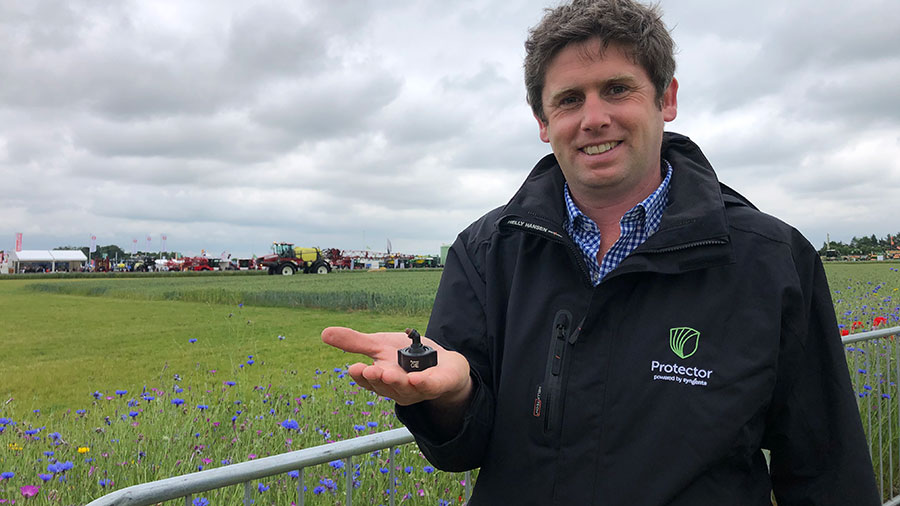Cereals 2021: Low-drift nozzle improves coverage
 Harry Fordenham holds the the 3D ninety nozzle© MAG/Emma Gillbard
Harry Fordenham holds the the 3D ninety nozzle© MAG/Emma Gillbard A new nozzle that enhances spray application efficacy, minimises environmental losses and improves blackgrass control is now available to arable farmers and sprayer operators.
Combining performance from Syngenta’s 3D nozzle with the benefits of 90% drift reduction technology (DRT), the 3D90 nozzle launched at the Cereals event aims to achieve the most even spray distribution across its target area.
See also: Winter bean choices include market leader-beating variety
Maximum coverage
Harry Fordham, Syngenta’s new farming technologies lead, says the nozzle is designed to reduce drift-susceptible droplets, and maximise the number of droplets to the target area.
“The new nozzle has been developed alongside sprayer operators in the field to get the best design possible,” he says.
One of the key features of the development was establishing the optimal spray angle to provide all-round coverage, with a larger angle of 55deg giving the most consistent results.
An alteration to the angle of as little as 5deg caused a 31% greater spray deposition on the target, with 36% more on the back and 20% on the front to enhance coverage.
“Avoiding drift keeps all the product on target and in the crop, as well as mitigating the effects of wind gusts that can disrupt the spray pattern during application,” explains Mr Fordham.
Furthermore, he said drift reduction is highly important in legislation to minimise environmental loss that could potentially jeopardise future product registration.
SnapLock cap
To facilitate easy fitting to any sprayer, the 3D90 also integrates a SnapLock Cap with every nozzle and is fully compatible with the latest Pulse Width Modulation technology.
It is available in 03, 035, 04, 05, 06 and 08 sizes, and is recommended for pre-emergence herbicide and blight spray applications,
In company field trials, assessing the performance of the new nozzle on the control of blackgrass, the 3D90 performed 9% better than the industry standard grassweed application 3D nozzle at the recommended 200 litres/ha.

